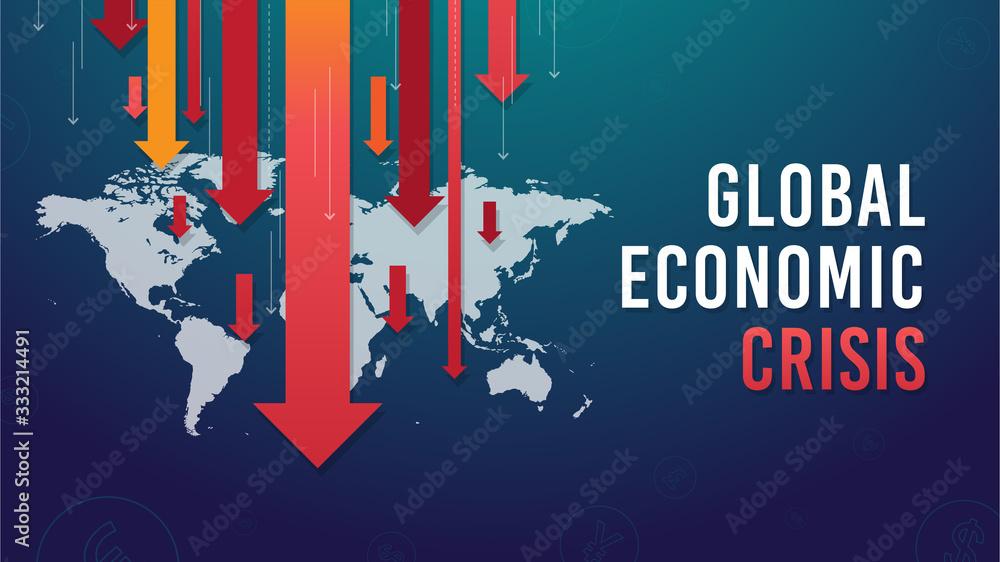In the intricate tapestry of the global economy, where threads of finance, trade, and policy weave an ever-evolving narrative, the specter of economic shocks looms large. These unforeseen jolts—whether spawned by geopolitical tensions, natural disasters, or financial crises—send ripples across continents, altering the delicate balance of markets and economies. At the heart of this tumult lies credit risk, a barometer of financial stability that gauges the likelihood of borrowers defaulting on their obligations. As the world becomes increasingly interconnected, understanding the profound impact of global economic shocks on credit risk is not merely an academic exercise but a crucial endeavor for policymakers, investors, and financial institutions alike. This article delves into the intricate dynamics between these economic tremors and credit risk, offering insights into how these forces shape the financial landscape and, ultimately, the fortunes of nations and individuals. Join us as we unravel the complexities of this relationship, shedding light on the challenges and opportunities that lie ahead in an unpredictable world.
Ripple Effects of Global Economic Turbulence on Credit Risk Dynamics
In the interconnected web of the global economy, economic shocks reverberate far beyond their epicenter, creating profound implications for credit risk dynamics. Credit risk, the possibility that borrowers may default on their obligations, is highly sensitive to global economic conditions. As financial systems become increasingly interlinked, the impact of economic disturbances—be it a sudden downturn in a major economy, geopolitical tensions, or unexpected shifts in commodity prices—can quickly spread across borders, influencing credit risk assessments worldwide.
- Volatility in Currency Markets: Fluctuations in exchange rates can increase the cost of servicing foreign-denominated debt, elevating default risks.
- Interest Rate Adjustments: Central banks may alter interest rates in response to global shocks, affecting borrowing costs and credit availability.
- Supply Chain Disruptions: Global events can disrupt supply chains, impacting business revenues and their ability to meet financial obligations.
These factors necessitate a robust and adaptive approach to credit risk management. Financial institutions must remain vigilant, employing advanced analytics and real-time data monitoring to navigate the complexities of an ever-evolving global landscape. By understanding the intricate ripple effects of economic turbulence, stakeholders can better anticipate potential challenges and safeguard their financial health.

Decoding the Vulnerabilities: How Economic Shocks Reshape Credit Landscapes
In the intricate web of global finance, economic shocks act as powerful catalysts that expose and amplify vulnerabilities within credit landscapes. These disruptions, whether stemming from geopolitical tensions, natural disasters, or financial crises, challenge the stability of credit systems, revealing the underlying fragility of financial institutions and borrowers alike. As the ripple effects of such shocks permeate through economies, they often lead to a tightening of credit conditions, increased default rates, and a reevaluation of risk assessments. Financial institutions, in their quest to safeguard assets, may adopt more stringent lending criteria, impacting businesses and consumers who rely on credit for growth and sustenance.
Key vulnerabilities exposed by economic shocks include:
- Liquidity Constraints: Sudden economic downturns can lead to a liquidity crunch, where access to cash becomes limited, affecting borrowers’ ability to meet their obligations.
- Interest Rate Volatility: Fluctuations in interest rates, often a byproduct of economic instability, can alter the cost of borrowing, affecting both lenders and borrowers.
- Creditworthiness Reevaluation: In times of uncertainty, credit ratings may be reassessed, leading to potential downgrades that can increase borrowing costs.
- Sector-Specific Impacts: Certain industries may be disproportionately affected, leading to sector-specific credit risks that necessitate tailored risk management strategies.
Strategic Risk Mitigation: Strengthening Credit Portfolios Amidst Global Uncertainty
In an era where global economic shocks reverberate across borders with unprecedented speed, the imperative to fortify credit portfolios has never been more critical. Financial institutions must adopt a proactive approach to mitigate strategic risks, focusing on enhancing resilience and adaptability. Key strategies include diversifying credit exposures across geographies and industries, implementing advanced analytics for early warning signals, and fostering robust stress-testing frameworks. These measures not only safeguard against potential defaults but also position portfolios to capitalize on emerging opportunities in volatile markets.
Furthermore, institutions should prioritize the integration of innovative technologies to streamline risk assessment processes. Leveraging artificial intelligence and machine learning can provide deeper insights into borrower behavior and macroeconomic trends, enabling more informed decision-making. Emphasizing transparency and communication with stakeholders ensures that strategic adjustments are well-understood and supported. As global uncertainties continue to challenge conventional risk management paradigms, the agility to adapt and evolve will define the leaders in credit risk mitigation.
Future-Proofing Financial Stability: Proactive Measures for Navigating Economic Shocks
In an era marked by unprecedented global economic volatility, safeguarding financial stability requires a proactive approach. Financial institutions must adopt a suite of strategic measures to mitigate the impact of economic shocks on credit risk. Diversification of investment portfolios stands as a cornerstone strategy, enabling institutions to spread risk across various asset classes and geographies. By doing so, they can buffer against localized economic downturns that might otherwise wreak havoc on concentrated investments.
Furthermore, enhanced risk assessment models are crucial in anticipating potential credit defaults. These models should incorporate a broad spectrum of economic indicators, including geopolitical tensions, currency fluctuations, and technological disruptions. Regular stress testing of credit portfolios can also provide valuable insights, allowing institutions to adjust their risk management strategies in real-time. Additionally, fostering robust communication channels with borrowers can preemptively address potential financial difficulties, ensuring that both parties are better prepared to navigate turbulent economic waters.
- Diversification of investment portfolios
- Adoption of enhanced risk assessment models
- Implementation of regular stress testing
- Fostering robust communication channels with borrowers





